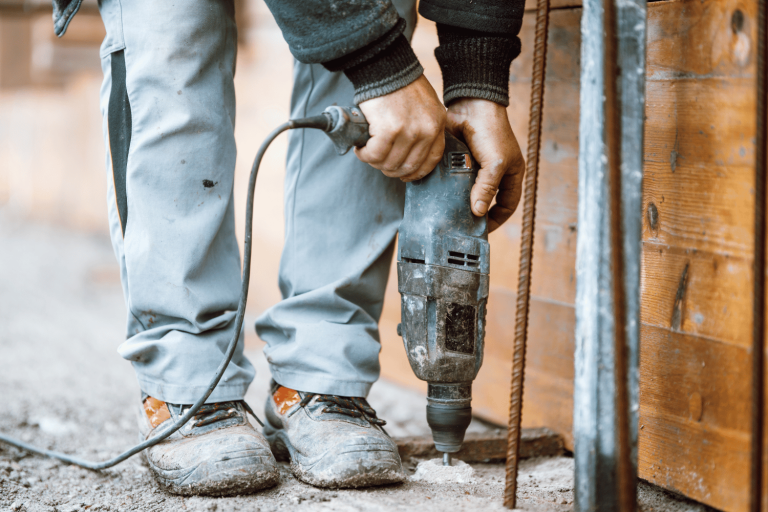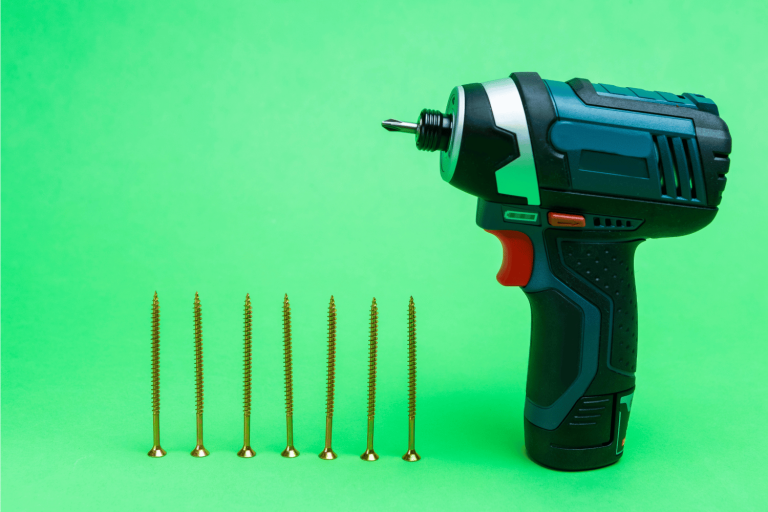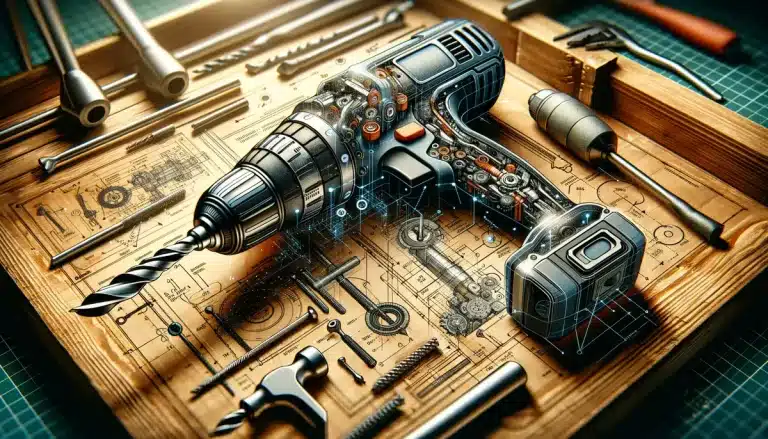3/8 Vs 1/2 Cordless Impact Wrench: Make the Right Choice
Are you ready to take your projects to the next level?
Choosing the right size impact wrench can make a world of difference in your productivity. With the 3/8 vs 1/2 debate, it’s crucial to find the perfect fit for your needs.
In this article, we’ll explore the differences between these two sizes so you can make an informed decision.
Get ready to unleash your potential and make the right choice for maximum impact.
Key Takeaways
- 3/8 impact wrenches are more suitable for jobs requiring less than 150 ft/lbs oftorque.
- 1/2 impact wrenches offer higher maximum torque levels, often at least 300 ft/lbs.
- 3/8 impact wrenches are smaller, lighter, and more portable, making them ideal for tight spaces.
- 1/2 impact wrenches are better suited for working on stubborn bolts and projects that require higher torque levels.
What is an Impact Wrench?
An impact wrench is a power tool used for fastening and loosening nuts and bolts. It delivers high torque output with minimal effort, making it efficient and time-saving.
Understanding the different types of impact wrenches and choosing the right size for your specific needs is crucial for optimal performance and safety.
Types of Impact Wrenches
When choosing an impact wrench, consider the different types available and their specific features and benefits. Impact wrenches come in various sizes and power levels to suit different needs. The torque levels and power output of an impact wrench are important factors to consider.
A 1/2 impact wrench generally delivers more torque and is better suited for heavy-duty applications, while a 3/8 impact wrench is preferable for tasks requiring less torque. Additionally, size and weight play a role in the functionality of an impact wrench.
A 3/8 impact wrench is smaller and lighter, making it more portable and suitable for working in tight spaces. On the other hand, a 1/2 impact wrench is larger and heavier, providing more power but less maneuverability.
Consider these factors to choose the impact wrench that best suits your needs.
Importance of Choosing the Right Size Impact Wrench
To ensure optimal performance, it’s crucial that you choose the right size impact wrench for your specific needs and projects. Here are three reasons why making the right choice is important:
- Efficiency: Selecting the correct size impact wrench, such as a 1/2 impact wrench, ensures that you have the necessary power and torque to tackle your tasks efficiently. This means you can complete your projects in less time and with less effort.
- Precision: Using the right size impact wrench allows for better precision and accuracy in your work. Whether you’re working on tight spaces or need to remove stubborn bolts, choosing the appropriate size ensures that you have the control and finesse required for the job.
- Safety: The right size impact wrench helps prevent accidents and injuries. Using an impact wrench that’s too small or too large for the task at hand can lead to stripped or damaged bolts, as well as potential harm to yourself or others. By selecting the correct size, you can work confidently and safely.
Difference Between 3/8 and 1/2 Impact Wrench
The difference between a 3/8 and 1/2 impact wrench lies in their power and torque capabilities.
A 1/2 impact wrench has a more powerful motor and delivers higher maximum torque levels, making it better suited for working on stubborn bolts.
On the other hand, a 3/8 impact wrench is preferable for jobs requiring less torque and is more compact and easier to handle.
Overview of 3/8 Impact Wrench
If you’re looking for a versatile tool with precision, the 3/8 impact wrench offers a comprehensive overview of its capabilities and differences compared to the 1/2 impact wrench.
- Torque Output: The 3/8 impact wrench provides a torque output of 90 to 100 ft/lbs, making it suitable for jobs requiring less than 150 ft/lbs of maximum torque. The 1/2 impact wrench, on the other hand, offers at least 300 ft/lbs of maximum torque and is better suited for working on stubborn bolts.
- Power Tool: Both the 3/8 and 1/2 impact wrenches are cordless power tools that deliver high torque output with minimal effort. However, the 1/2 impact wrench has a more powerful motor and delivers higher maximum torque levels.
- Automotive Applications: The 3/8 impact wrench is ideal for automotive applications, such as working on smaller bolts and projects that require finer accuracy. The 1/2 impact wrench, with its higher torque output, is better suited for heavy-duty tasks and lug nut removals in the automotive industry.
Overview of 1/2 Impact Wrench
You can compare the power and functionality of the 3/8 impact wrench to the 1/2 impact wrench to understand the differences between them.
The 1/2 impact wrench, also known as an impact gun, offers higher torque and is a better option for heavy-duty tasks. With a more powerful motor, it can deliver maximum torque levels of at least 300 ft/lbs, making it suitable for working on stubborn bolts.
On the other hand, the 3/8 impact wrench delivers around 90 to 100 ft/lbs of maximum torque, making it preferable for jobs requiring less than 150 ft/lbs of torque.
Additionally, the 1/2 impact wrench is bulkier and weighs around 7 pounds, while the 3/8 impact wrench is smaller, lighter, and more portable, making it ideal for working in tight spaces.
Power and Torque Comparison
When comparing the power and torque of the 3/8 and 1/2 impact wrenches, understanding the differences can help you make an informed decision. Here are three key points to consider:
- High Power: The 1/2 impact wrench offers higher maximum torque levels and is better suited for heavy-duty applications. It often delivers at least 300 ft/lbs of torque, making it ideal for working on stubborn bolts.
- Size and Weight: The 3/8 impact wrench is smaller and weighs approximately 2 lbs, making it more portable and suitable for working in tight spaces. On the other hand, the 1/2 impact wrench weighs around 7 pounds and is bulkier due to its larger and more powerful components.
- Functionality: The 3/8 impact wrench is more compact and easier to handle, making it preferable for jobs that require less than 150 ft/lbs of torque and tight spaces. The 1/2 impact wrench, with its higher torque output, is better suited for projects that require more power and precision.
Considering these factors will help you choose the right air impact wrench or torque gun for your needs.
Choosing the Right Size for your Needs
When choosing the right size impact wrench for your needs, consider factors such as the specific applications and uses you have in mind.
A 3/8 impact wrench is ideal for projects that require precision and working in tight spaces, while a 1/2 impact wrench offers more power and is better suited for heavy-duty tasks.
Understanding your intended applications will help you make an informed decision on which size is most suitable for your needs.
Factors to Consider when Choosing Between 3/8 and 1/2 Wrench
If you’re unsure about which size wrench to choose, it’s important to consider factors such as power, size, functionality, and precision. Here are three key factors to help you make an informed decision:
- Power: The 1/2 impact wrench offers higher maximum torque levels, making it more suitable for heavy-duty applications. The 3/8 impact wrench, on the other hand, delivers lower torque levels and is preferable for jobs requiring less torque.
- Size and Weight: The 1/2 impact wrench is bulkier and weighs around 7 pounds, while the 3/8 impact wrench is smaller and weighs approximately 2 pounds. The 3/8 impact wrench is more portable and fits better in tight spaces.
- Precision: The 3/8 impact wrench allows for more accuracy and precision while fastening or removing nuts and bolts. Its smaller size and lighter weight contribute to better precision. The 1/2 impact wrench may lack precision due to its larger size.
Consider these factors to choose the right size wrench for your needs, ensuring both power and precision in your projects.
Applications and Uses of 3/8 Impact Wrench
The 3/8 impact wrench is versatile and can be used for various applications, making it a valuable tool for your needs. This powerful tool is specifically designed for fastening and removing nuts and bolts with accuracy and precision.
Its compact size and lightweight construction make it ideal for working in tight spaces where larger impact wrenches may not be suitable.
The 3/8 impact wrench is commonly used in automotive repair, construction projects, and DIY tasks that require fine-tuned control and precision. Whether you’re working on small engines, assembling furniture, or performing maintenance on your vehicle, the 3/8 impact wrench is a reliable choice that provides the power and accuracy necessary for the job at hand.
Applications and Uses of 1/2 Impact Wrench
You should consider the power and versatility of a 1/2 impact wrench when choosing the right size for your needs. Here are three key points to help you understand its ideal torque and applications:
- Greater Power: The 1/2 impact wrench offers higher maximum torque levels compared to smaller sizes. With at least 300 ft/lbs of maximum torque, it’s better suited for working on stubborn bolts and heavy-duty applications.
- Versatile Applications: The 1/2 impact wrench is ideal for a range of applications, including automotive repair, heavy equipment maintenance, product assembly, and large construction projects. Its power and precision make it suitable for various tasks that require high torque output.
- Enhanced Functionality: The 1/2 impact wrench is designed to handle tougher jobs. Its larger size and more powerful motor allow for effective removal of nuts and bolts safely. Whether you need to tackle stubborn fasteners or require precise torque for demanding projects, the 1/2 impact wrench offers the power and versatility you need.
Consider these factors when choosing an impact wrench to ensure you have the right tool for your specific applications and uses.
Frequently Asked Questions
What is an impact driver?
An impact driver is a power tool that is used for driving screws and bolts. It delivers strong rotational and downward force, allowing for efficient fastening and loosening of fasteners.
What is a Milwaukee impact wrench?
A Milwaukee impact wrench is a type of impact driver manufactured by the brand Milwaukee. It is known for its high quality and durability.
What is a socket?
A socket is a tool that is used to turn bolts or nuts with a ratchet or wrench. It is designed to fit over the head of a fastener and provide a secure grip.
Are there different sizes of impact wrenches available?
Yes, impact wrenches are available in different sizes. The size refers to the drive size, which determines the size of the sockets that can be used with the wrench.
What is the difference between a 3/8 and 1/2 cordless impact wrench?
The main difference is the size of the anvil, which is the square drive where the socket is attached. A 3/8 impact wrench has a 3/8 inch anvil, while a 1/2 impact wrench has a 1/2 inch anvil.
Which size of impact wrench should I choose?
The size of the impact wrench you choose depends on the type of work you will be doing. If you will be mostly working with smaller nuts and bolts, a 3/8 impact wrench may be sufficient. However, if you will be working with larger nuts and bolts, a 1/2 impact wrench would provide more torque.
What are the advantages of a compact design in an impact wrench?
A compact design in an impact wrench makes it easier to maneuver in tight spaces. It is also generally lighter and more portable, making it more convenient to use.
How much torque can an impact wrench deliver?
A: The amount of torque that an impact wrench can deliver depends on its power and design. Some impact wrenches can deliver up to 90 pound-feet or even more.
How does the push-button system work in an impact wrench?
The push-button system in an impact wrench allows for easy socket changes. By pressing the button, the socket can be quickly and securely attached or detached from the wrench.
How does an impact wrench work?
When the trigger is pressed, an impact wrench creates high torque by applying rapid, downward force to the fastener. This force is achieved through a hammering mechanism inside the tool.







